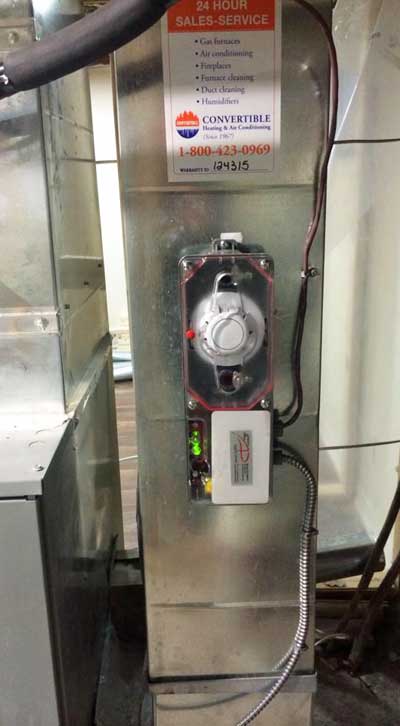HVAC Duct Smoke Detectors
Duct smoke detectors are devices installed within HVAC (Heating, Ventilation, and Air Conditioning) systems to detect smoke or fire. Unlike standard smoke detectors that are installed on ceilings or walls, duct smoke detectors are designed to sense smoke within the air ducts of HVAC systems. Their primary purpose is to prevent the spread of smoke through the ventilation system, which could potentially distribute harmful smoke throughout the entire building.
Purpose of HVAC Duct Smoke Detectors
- Early Detection of Fire
Duct smoke detectors provide early warning of a fire by detecting smoke in the HVAC system before it becomes visible. This early detection can be crucial in preventing the spread of fire and allowing for timely evacuation and intervention. - Preventing Smoke Spread
One of their main purposes is to prevent the distribution of smoke throughout a building via the HVAC system. By detecting smoke within the ducts, these detectors can trigger the HVAC system to shut down or switch to a mode that prevents smoke circulation, helping to contain the smoke to a specific area. - Enhancing Safety
By integrating with fire alarm systems, duct smoke detectors enhance the overall safety of a building. They ensure that the presence of smoke is detected and reported quickly, enabling swift action by occupants and emergency responders. - Compliance with Building Codes
Many building codes and fire safety regulations require the installation of duct smoke detectors in commercial, industrial, and large residential buildings. Compliance with these regulations is necessary to ensure the safety of occupants and to avoid legal penalties.
Types of Duct Smoke Detectors
- Photoelectric Duct Smoke Detectors
Photoelectric detectors use a light source and a photoelectric sensor to detect smoke. When smoke enters the detector, it scatters the light, which triggers the sensor and activates the alarm. These detectors are effective at detecting slow-burning, smoldering fires. - Ionization Duct Smoke Detectors
Ionization detectors use a small amount of radioactive material to ionize the air within a sensing chamber. When smoke enters the chamber, it disrupts the ionization process, triggering the alarm. These detectors are more sensitive to fast-flaming fires. - Combination Detectors
Some duct smoke detectors combine both photoelectric and ionization technologies to provide comprehensive detection of both smoldering and flaming fires. These detectors offer enhanced reliability and sensitivity.
Installation
- Assessment and Planning
The first step in the installation of duct smoke detectors is a thorough assessment and planning phase. This involves evaluating the HVAC system, determining the optimal locations for detector installation, and ensuring compliance with local building codes and regulations. A professional HVAC technician or fire safety specialist will inspect the system to identify potential points where smoke detection is most critical. - Selecting the Right Detectors
Choosing the right type and model of duct smoke detector is crucial for effective smoke detection. Factors to consider include the size and layout of the HVAC system, the specific requirements of the building, and any applicable building codes. It is essential to select detectors that are compatible with the existing fire alarm system and HVAC controls. - Preparing the Installation Site
Before installation, turn off the HVAC system to ensure safety. Prepare the installation site within the duct by cutting an appropriate-sized opening for the detector housing. The location should allow for optimal airflow through the detector while avoiding areas of excessive turbulence or dead air spaces. - Installing the Detector
The installation process involves several key steps:
- Mounting the detector housing: Mount the detector housing onto the duct to ensure a secure fit. Align the housing with the airflow direction for accurate smoke detection.
- Connecting the sampling tubes: Install sampling tubes to allow air to flow into the detector. Position these tubes both upstream and downstream of the detector housing to ensure accurate sampling of the air within the duct.
- Wiring the detector: The detector is wired to the building’s fire alarm system and HVAC controls. This wiring ensures that the detector can communicate with the fire alarm system to trigger alarms and initiate HVAC shutdown or smoke control measures.
- Testing the system: Once the installation is complete, the system is tested to ensure proper operation. This includes checking the detector’s sensitivity, verifying the airflow through the sampling tubes, and confirming that the detector can communicate with the fire alarm system.
- Final Inspections and Approvals
After installation and initial testing, a qualified professional or local building authority must conduct a final inspection. This inspection ensures that the installation meets all safety standards and regulations. Upon approval, the duct smoke detectors are ready for use, providing enhanced fire safety for the building.
Maintenance and Testing
Regular maintenance and testing of duct smoke detectors are essential to ensure their continued effectiveness. This includes:
- Annual testing: Most local regulations require annual testing by a certified professional to ensure the detectors are functioning correctly.
- Periodic inspections: Regular inspections for signs of wear, damage, or dust buildup help identify potential issues before they become serious problems.
- Cleaning and servicing: Periodic cleaning and servicing of the detectors ensure they remain free from debris or buildup that could affect their performance.
Conclusion
Duct smoke detectors play a vital role in enhancing fire safety by providing early detection of smoke and preventing its spread through HVAC systems. Understanding their purpose, benefits, and installation process is crucial for maintaining a safe and compliant building. Regular maintenance and testing further ensure that these devices continue to provide reliable protection against fire hazards, safeguarding the health and well-being of occupants.

